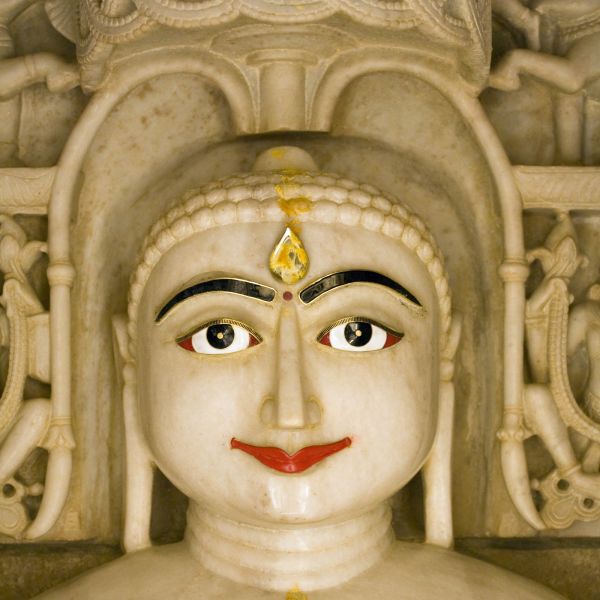The Jain faith is one of the oldest religions in India, with a history that dates back to the 6th-5th century BCE. Its roots can be traced to the time when Mahāvīra, the 24th Jina, preached in the eastern part of India, known as Magadha. Since then, Jainism has been a significant presence on the Indian subcontinent, and it has also gained diaspora communities in various countries around the world.
Origins of Jainism

The exact historical beginnings of Jainism are difficult to determine due to the lack of archaeological evidence. However, it is believed that Jainism was already an established faith by the time of Mahāvīra. The Jains do not believe in a creator god like in Hinduism or the Abrahamic religions. Instead, they venerate perfect ascetics known as Jinas or Tīrthaṃkaras, who serve as role models for the followers of Jainism.
The Life of a Jina
Jinas lead extraordinary lives, beginning as princes in royal families before withdrawing from society to pursue religious initiation. They undergo rigorous tests to demonstrate their perseverance and spiritual evolution. Ultimately, they attain full enlightenment, known as omniscience (kevalajñāna), allowing them to teach others the principles of Jainism. Jinas establish communities of monks, nuns, and lay followers, spreading their teachings and guiding their followers towards liberation from the cycle of rebirths.
The Jain Worldview
The Jain faith is centered around three fundamental principles: correct faith, correct understanding, and correct conduct. These principles form the basis for the Jain way of life and religious practices. Central to Jainism is the recognition of nine verities or principles, including the existence of living beings, material things, the flow of karma in the soul, the need to block and annihilate karma, and the ultimate liberation from rebirths.

The Jain Way of Life
The Jain community is divided into two categories: ascetics and lay followers. Ascetics, both male and female, renounce ordinary life and follow the “five great vows” of non-violence, truth, not taking what has not been given, celibacy, and non-attachment. Lay followers, on the other hand, live in the world and engage in professional and family life while adhering to a milder form of the vows.
Non-Violence and Vegetarianism
Non-violence (ahiṃsā) is a foundational principle in Jainism, stemming from a detailed classification of life forms based on their sense faculties. Jains strictly practice vegetarianism, abstaining from meat, fish, root vegetables, alcohol, and certain fruits. Lay Jains observe these restrictions to varying degrees, while mendicants follow them more rigorously. Jain teachings also emphasize not causing harm to the tiniest of organisms, leading mendicants to adopt a sedentary lifestyle during the rainy season.
Jain Rituals and Worship
Jains express their faith through various rituals and forms of worship. The daily prayer known as the “Fivefold homage” is a significant component of Jain worship, where mantras are chanted to pay respects to religious teachers. Confession and repentance are also important practices, along with meditating on key topics such as impermanence and the impurity of the body. Jains worship Jina images in temples, commemorate important dates in the Jinas’ lives through festivals, and undertake pilgrimages to sacred Jain sites.
Diversity Within Jainism

While Jains share foundational principles of karma and non-violence, there are divisions within the faith based on practices rather than doctrine. The most significant division is between the Śvetāmbaras and the Digambaras. The Śvetāmbaras wear white clothing and believe that women can attain final liberation. In contrast, the Digambaras go naked (digambara means sky-clad), believe that full detachment through nudity is necessary for liberation (excluding women), and recognize different scriptures as authoritative. Other subdivisions exist, but they do not threaten the unity of the Jain community.
Conclusion
The Jain faith is a path to liberation and purification, emphasizing correct faith, understanding, and conduct. Jains venerate Jinas who have attained enlightenment and follow their teachings to lead a life of non-violence and spiritual growth. Jainism’s emphasis on vegetarianism, non-attachment, and rigorous ethical principles distinguishes it as a unique and influential religion in India and beyond.
By delving into the origins, beliefs, and practices of Jainism, we gain a deeper appreciation for this ancient faith and the impact it continues to have on its followers’ lives. From the principles of non-violence to the rich traditions of worship and rituals, Jainism offers a profound spiritual path that has stood the test of time.




No comments! Be the first commenter?